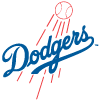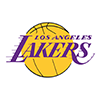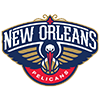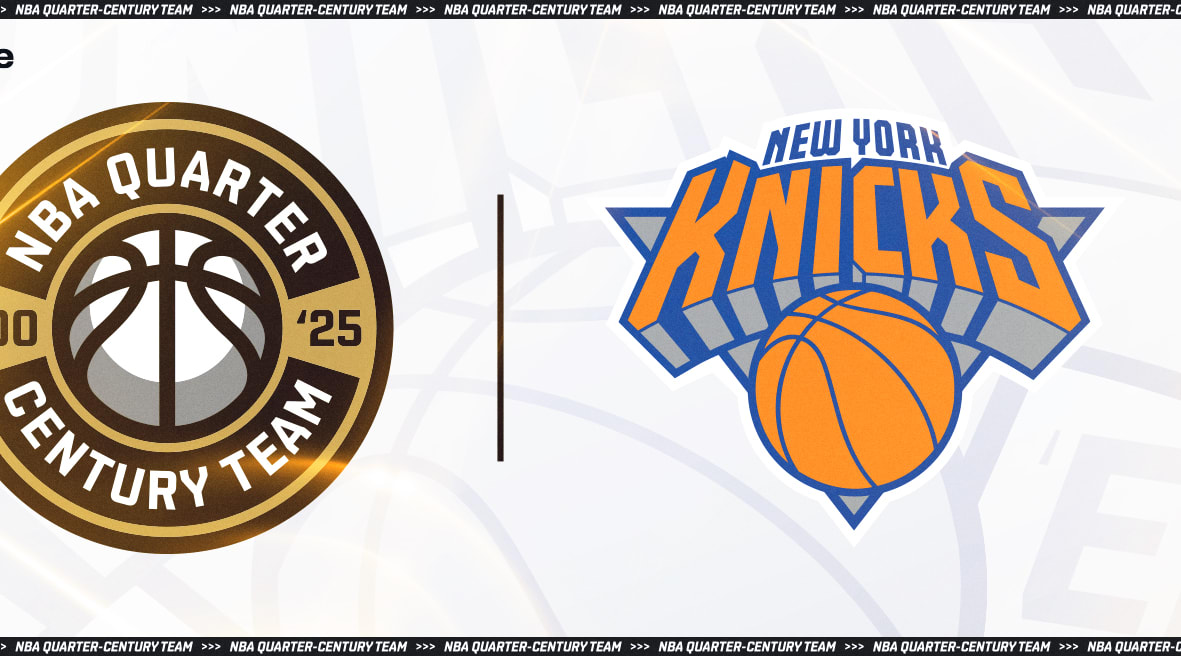There was certainly an international flavor to last night's NBA Draft. Here are our Outlooks for picks 11-20.
Pick #11) Domantas Sabonis, F/C, Oklahoma City Thunder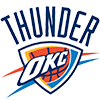
Height/Weight: 6-foot-10, 231 pounds
From: Gonzaga
Age: 20
The Oklahoma City Thunder were one of the principals in the splashiest move of the 2016 NBA Draft, trading Serge Ibaka to the Orlando Magic in order to move into the first round and grab Sabonis at 11th overall. Additionally, the Thunder acquired Victor Oladipo and Ersan Ilyasova in the deal, resulting in a rather sizable heist for Ibaka, whose scoring, rebounding averages had declined in each of the past three seasons.
The son of international great and former Trail Blazers center Arvydas Sabonis, Domantas rose up draft boards as the evaluation process unfolded this spring. His floor compares favorably to that of some of the other big men in the late lottery and middle of the first round, without carrying the same kind of bust potential. While he's not projected to start as a rookie, Sabonis' mature game could allow him to enter the rotation right away for the Western Conference runner-ups, though he'll have to compete with Steven Adams, Enes Kanter and Ilyasova for minutes.
Sabonis' numbers as a sophomore at Gonzaga were outstanding, as he averaged 17.6 points and 11.8 rebounds in 31.6 minutes per game while shooting 61.1 percent from the field and 76.9 percent from the line. That rate from the field probably won't be sustainable at the next level since he's slightly undersized for a post player at 6-foot-10 with an unimpressive 6-foot-11 wingspan, creating a higher degree of difficulty on his shots around the hoop. However, his percentages from the field and the line should still be above average, relative to his position.
He won't protect the rim like most centers, either, so we could end up seeing Sabonis utilized more often at power forward next to Adams in an effort by coach Billy Donovan to limit the strain on the team's overall defense. Sabonis' rebounding ability and motor will make him a good overall team defender if he isn't tasked with being the last line of defense.
There is a chance that he could end up developing into a stretch option, as he hit 35.7 percent of his three-point attempts at Gonzaga, although it's hard to put much stock in that success rate as the sample size (14 attempts) was very limited. Still, Sabonis will undoubtedly put the work in to become a solid three-point shooter, even if only from the corners.
Sabonis, like his father, is also a very gifted passer. Big men who are skilled in this many ways offensively, so that the ball doesn't necessarily stop when it reaches them in the flow of the offense, are a prized commodity in today's game. Sabonis fits this description, which is why the Thunder coveted him as one of the pieces in the trade.
12) Taurean Prince, F, Atlanta Hawks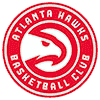
Height/Weight: 6-foot-8, 220 pounds
From: Baylor
Age: 21
With the first of their two first-round selections in the 2016 NBA Draft, the Atlanta Hawks grabbed Prince with the 12th overall pick. The Hawks acquired the pick in Wednesday's three-team deal that sent Jeff Teague to the Indiana Pacers and George Hill to the Utah Jazz. It was the Hawks' earliest draft pick since they selected Al Horford and Acie Law with the third and 11th overall choices in 2007.
After assuming sixth-man duties as a junior, Prince became a full-time starter for the first time in his career at Baylor during his senior season. Prince shined in a featured role, averaging 16 points, six rebounds and 2.3 assists per game while shooting a respectable 36.1 percent from downtown. The season before, Prince hit 40 percent of his shots from distance, suggesting his three-point shooting is a replicable skill at the NBA level.
Prince is also regarded as a highly versatile defender. With a seven-foot wingspan, Prince is able to penetrate passing lanes and swallow up smaller guards, who he's also quick enough to move with laterally. In addition, Prince's 6-foot-8, 220-pound frame allows him to bang with power forwards down low, meaning the Hawks should feel comfortable rolling him out there against just about any type of lineup.
Prince isn't able to create his own offense off the dribble, which limits his overall ceiling as a scorer, but the Hawks will be more than happy if he develops into the "3-and-D" players most teams are looking for from their wing players these days. The Hawks have found great success with DeMarre Carroll and Kent Bazemore filling those roles the last two seasons, and Prince could be the next in the succession line.
Though the organization has indicated that they hope to re-sign Bazemore, an unrestricted free agent, at the very least, Prince and fellow first-rounder DeAndre Bembry should provide some quality insurance on the wing if the Hawks are unable to retain Bazemore. Veterans Thabo Sefolosha and Kyle Korver are also under contract for 2016-17, which also provides a safeguard for the Hawks in the event Prince proves in training camp that he isn't immediately ready to contribute as a rotation player. Due to his lack of a diverse offensive game, Prince doesn't profile as a potential All-Star down the road, but at his peak, he could be a low double-digits scorer who can stretch the floor and capably guard multiple positions.
13) Georgios Papagiannis, C, Sacramento Kings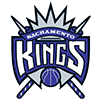
Height/Weight: 7-foot-2, 240 pounds
From: Greece
Age: 18
Originally slotted at eighth overall in the 2016 NBA Draft, the Sacramento Kings weren't particularly enamored with any of the options available at that spot, and opted to deal the pick to the Phoenix Suns, who used it on Marquese Chriss. In exchange, the Kings received the 13th and 28th overall picks along with a 2020 second-round choice and the draft rights to Bogdan Bogdanovic, using the earliest of those picks to grab Papagiannis, a massive big man by way of Greece.
At 7-foot-2 and 240 pounds, Papagiannis is huge even by the standards of most centers, but is unusually coordinated and mobile for a man his size. While suiting up for Greek League powerhouse Panathinaikos last season, Papagiannis was effective on a per-minute basis, averaging 6.5 points and 2.7 rebounds in 11.6 minutes per contest. He showed some aptitude as a finisher near the rim and at times displayed a quality mid-range game, suggesting there's some offensive projection to be had here. And after shooting 66.7 percent from the free-throw line last season, Papagiannis should be able to keep himself on the court during crunch time.
Unfortunately for Papagiannis, he's still been too frequently exposed as a defender. Despite his huge frame, he isn't much of a shot blocker and is still lacking in physicality, which occasionally allows smaller offensive players to get the best of him. Papagiannis was able to hide his shortcomings a bit in the Greek League, but he figures to be more of an eyesore defensively in the NBA, as he'll struggle to defend centers whose range extends to the perimeter. Further complicating matters, Papagiannis has been knocked for his inconsistent motor, suggesting that the Kings might not be able to rely on him to make up for his defensive flaws with high effort.
Considering he's just 18 years old and the Kings already count DeMarcus Cousins and Willie Cauley-Stein as franchise cornerstones in the frontcourt, Papagiannis is unlikely to see much run as a rookie, and could even stay in Greece for another season or two. Over the long haul, the Kings likely envision him as a good foil to Cauley-Stein, a more defensive-minded, rim-protecting center than the offensively-inclined Papagiannis. Centers of Papagiannis' breed are becoming increasingly rare in today's NBA, but if the Kings are able to use him properly in conjunction with their other big men, he could carve out a nice career as a low-end starter or high-end backup.
14) Denzel Valentine, G, Chicago Bulls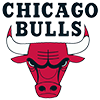
Height/Weight: 6-foot-6, 210 pounds
From: Michigan State
Age: 22
After dealing Derrick Rose to the New York Knicks a day earlier, the Chicago Bulls bolstered their backcourt during Thursday's NBA Draft, adding Michigan State guard Denzel Valentine to the roster with the 14th overall pick. There was some belief that Valentine might slip until later in the first round after a report surfaced following the NBA Combine that he had cartilage damage to both knees, but the Bulls were able to overlook those concerns and place more stock in his sensational college career.
Valentine's success during his senior season is already well known. He averaged 19.2 points, 7.8 assists, 7.5 rebounds and one steal in 33 minutes per game during his final year at East Lansing, but his lack of athleticism and the fact that he was a four-year player raise valid questions about how much of those achievements will be duplicable in the NBA. He is a hair under 6-foot-6 and lacks notable length, so Valentine profiles either as a shooting guard with questionable range and below-average athleticism or a point guard with below-average speed and quickness.
There's also still reason to fear Valentine's long-term health outlook, even if the existing cartilage damage doesn't delay his rookie season. In his young career, Valentine has already undergone a pair of surgeries, and the specter of more knee issues down the road makes the 22-year-old one of the first round's riskier commodities. However, there comes a point when the reward of a steady, well-rounded player like Valentine becomes worth the risk, and for the Bulls, that was clearly the case.
It may be that Valentine ends up settling in as just a valuable role player who can serve as a backup point guard at times or a shooting guard who creates for his teammates and spots up in the corner. Coaches want players that they can trust to make the right play at the end of games, and Valentine's basketball IQ is right up there with any other player in this draft. Even if he comes off the bench to start games, he could be on the court to finish games, depending on the matchups.
The Bulls don't have much in the way of high-end depth at either guard spot, with Jose Calderon and Jerian Grant ranking as the top in-house options at the point and Jimmy Butler, Mike Dunleavy and Doug McDermott representing the top wing options. As such, Valentine could insert himself into the rotation immediately as a rookie, though he'll likely play a limited role to begin his NBA career.
15) Juan Hernangomez, F, Denver Nuggets
Height/Weight: 6-foot-9, 220 pounds
From: Spain
Age: 20
With the second of their three first-round choices in the 2016 NBA Draft, the Denver Nuggets settled on Hernangomez as the 15th overall selection. The brother of New York Knicks' 2015 second-rounder Willy Hernangomez, Juan is the better prospect of the two and has expressed a desire to play for the Nuggets this season, though it's uncertain if that will come to fruition.
Of all the foreign prospects in this year's draft, nobody shot up draft boards in April and May quiet as much as Hernangomez. Unlike many of the other stretch bigs in the first round, Hernangomez's skills are seen as very advanced, and he offers a higher perceived floor than several of the college freshman he was competing against for a mid-first round selection.
The main selling point on the 6-foot-9 Spaniard is his ability to score efficiently in a variety of ways. He offers present NBA range, shooting 35.8 percent from beyond the arc last year in the ACB League, the top tier of professional basketball in Spain.
But he's not just a catch-and-shoot floor stretcher. On closeouts behind the three-point line, Hernangomez can put the ball on the deck and get to the rim in one or two dribbles. He doesn't shy away from contact, and routinely finishes with two hands on drives and on the offensive glass.
A high motor and competitive edge are evident, as Hernangomez gets out in transition, whether he's trying to fill a lane on offense or trying to hurry back on defense. Hernangomez's quickness on the offensive end suggests he could also have the lateral mobility to be a serviceable defender in the NBA. He won't be asked to check the top players at either forward spot very often, but he'll be able to more than hold his own against other stretch bigs and stretch wings. After averaging 23.7 minutes per game in Spain last year, he'll be accepting of a supporting role when he ultimately joins the Nuggets. At the midpoint of the first round, that should be seen as a plus, not a negative.
As their roster is presently constructed, the Nuggets' depth on the wing exceeds that of their frontcourt, so Hernangomez could end up seeing most of his time at power forward during his early years. In the event he joins the Nuggets in 2016-17, Hernangomez would likely open training camp behind Kenneth Faried and Joffrey Lauvergne on the depth chart at that spot, assuming no other additions.
16) Guerschon Yabusele, F, Boston Celtics
Height/Weight: 6-foot-8, 270 pounds
From: France
Age: 20
With the Boston Celtics holding an abundance of draft picks and not enough roster spots to accommodate all their rookies, Yabusele was selected 16th overall in the 2016 NBA Draft as a draft-and-stash player. The Celtics would go on to use their third and final first-round selection on 19-year-old Croatian big man Ante Zizic, making them the first team since the Detroit Pistons in 2003 to select a pair of foreigners in the first round. In Yabusele's case, the 20-year-old is expected remain with his international team, Rouen of France, for at least the next year or two while the Celtics track his development abroad.
Yabusele doesn't fit the conventional measurements NBA teams typically look for in frontcourt players. He stands only 6-foot-8 and weighs in at 270 pounds, making him the heaviest player selected in the first round. Despite what his dimensions suggest, Yabusele takes good care of his body, packing a lot of muscle into that listed weight. He also has lengthy arms, which help offset some his height deficiencies to some degree.
From a skills standpoint, Yabusele is a surprisingly adept shooter. He already grades out as an above-average marksman from the outside, as he hit 43 percent of his three-point attempts with Rouen last season. Celtics coach Brad Stevens has shown an affinity in the past for big men like Jared Sullinger, Kelly Olynyk and Jonas Jerebko who can stretch the floor, and Yabusele seems like another player who might fit that mold.
Yabusele doesn't merely camp out by the three-point line, however. He averaged 11.5 points on 53.9 percent shooting from the field last season, showing good touch near the rim and the ability to outmuscle opponents in the lower block, in addition to his prowess from beyond the arc.
If there's one area Yabusele remains a little underdeveloped, it's on the defensive end. The same aggressiveness he shows on offense doesn't always manifest itself when he's guarding opponents, and his lack of size is more glaring on that side of the floor. Before seriously considering bringing him to the NBA, the Celtics will need Yabusele to make significant strides in that department. Though he's quicker than he looks, Yabusele doesn't move well enough laterally to match up with small forwards, so he'll have to figure out a way to buckle down against power forwards and centers if he hopes to avoid washing out of the league.
17) Wade Baldwin, G, Memphis Grizzlies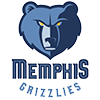
Height/Weight: 6-foot-4, 202 pounds
From: Vanderbilt
Age: 20
In the likely scenario that incoming free agent Mike Conley heads elsewhere this offseason, the Memphis Grizzlies reclaimed some depth at point guard with the 17th pick in the 2016 NBA Draft, selecting Baldwin, a sophomore out of Vanderbilt.
Baldwin may have been selected after fellow point guard and fifth overall pick Kris Dunn, but there are reasons to believe he could go down as the best player at the position in this draft class. Physically, Baldwin is right on par with Dunn, except Baldwin has an extra two inches of wingspan. Baldwin is also a viable threat from distance, shooting 40.6 percent on three-point attempts last season, while Dunn never shot better than 37.2 percent from behind the arc in three years in college. Throw in the fact that Baldwin is two years younger than Dunn, and it's easy to see him being one of the steals of the draft in the second half of the first round.
Of course, there are some obvious reasons Baldwin didn't come off the board before Dunn. Baldwin is still learning how to play point guard, and it will probably take a couple years before he's ready to run an NBA offense for more than just brief stretches off the bench. While he has demonstrated great efficiency from long range, he really needs to work on his mid-range game and finishing around the rim, as he shot just 43.7 percent from inside the arc last year.
Additionally, despite having more length than Dunn, Baldwin averaged just 1.2 steals in 30.4 minutes per game as a sophomore. He's a really good on-ball defender, and is adept at using his length to force his opponent into difficult shots. However, he obviously has some work to do in terms of forcing turnovers at a clip that his length would suggest he is capable of.
Baldwin also needs to work on being more aggressive and physical on the glass. A common denominator among the point guards who are excellent rebounders is a drive to go get the ball. He has the tools to be a great rebounder for his position, but if his motor doesn't tick up when shots go up, Baldwin may simply be just an adequate rebounder in the NBA.
Baldwin's role as a rookie will ultimately depend on what other additions the Grizzlies make to the backcourt during the offseason, but as things currently stand, he's the top option on the depth chart. Xavier Munford, a D-League pickup last March, is the only other player on the roster under contract for 2016-17 who has previous point guard experience.
18) Henry Ellenson, F/C, Detroit Pistons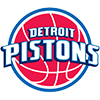
Height/Weight: 7-foot-0, 242 pounds
From: Marquette
Age: 19
The Detroit Pistons pulled the plug on Ersan Ilyasova in the middle of last season, dealing him away to the Orlando Magic, but they found a new potential stretch four with the 18th overall pick in the 2016 NBA Draft, tabbing Marquette freshman Henry Ellenson. With Andre Drummond commanding most of the attention from the opposition in the paint, Ellenson and fellow forwards Tobias Harris and Marcus Morris all figure to regularly float near the perimeter to create more spacing offensively for the Pistons.
Ellenson's size and picturesque three-point stroke might have led many to peg him as a modern power forward in the NBA, but unfortunately, he has yet to demonstrate he can actually stretch the floor, no matter how aesthetically pleasing his shot is. He shot 28.8 percent on 3.2 attempts per game from three-point range during his lone college season, and he didn't do enough in individual workouts to silence concerns about how efficient he will be from NBA distance. He has a high-quality pump fake, and can hit mid-range jumpers off the dribble, but he'll need defenses to actually be concerned about him letting it fly from long range if he wants that pump fake to work in the NBA.
On a more encouraging note, it was promising to see that despite being seven feet tall, Ellenson was able to ignite the fast break in college, as few players his size have the handles and coordination to go coast to coast. However, that probably isn't a skill that will translate right away at the next level, where players are much faster, stronger and more athletic than those he was facing in the Big East. Ellenson is a good, but not great rebounder, and will likely be a below-average defender, so his size isn't going to be a big asset on that end of the court.
One skill that should translate right away is his ability to set up teammates in the half court. There is a little Josh McRoberts in Ellenson's game, and McRoberts has enjoyed a solid nine-year NBA career. That seems like the most realistic career trajectory for Ellenson, as he should fit in as a solid bench player for the Pistons right from day one. Barring some major improvements to his three-point shooting, he may never escape that role, but at just 19 years old, Ellenson has plenty of time to refine that skill.
19) Malik Beasley, G, Denver Nuggets
Height/Weight: 6-foot-5, 190 pounds
From: Florida State
Age: 19
After nabbing a smooth-shooting freshman guard in Kentucky's Jamal Murray with the seventh overall pick, the Denver Nuggets doubled down on that archetype with their third first-round selection, selecting Beasley with the 19th choice in the 2016 NBA Draft. Playing for a non-NCAA tournament team in Florida State, Beasley may have had a less prominent stage than Murray, but his potential as a three-point sniper at the next level may be even greater.
Like Murray, Beasley isn't any sort of physical specimen. At 6-foot-5 and with minimal strength, Beasley is undersized for a shooting guard, and his lack of development as a ball handler suggests he's not a realistic option at point guard. With that in mind, Beasley seems destined to be little more than a role player in the NBA, as he brings few other standout skills to the table other than his shooting. If that ends up being the case, that's certainly nothing for the Nuggets to be disappointed about; a lengthy career as a team's designated marksman off the bench is a highly favorable outcome for a late first-round pick.
Beyond his excellent stroke, Beasley is an acceptable performer on the boards, grabbing 5.3 rebounds per game during his freshman season, but he doesn't project to be much more than an average defensive player. He's not somebody the Nuggets will have to worry about hiding on that end, but with averages of just 0.9 steals and 0.2 blocks at Florida State, he's not a disruptor either.
Aside from the limitations of his skill set, Beasley's biggest roadblock to reaching his potential might be the Nuggets' proliferating depth at guard and small forward. In addition to Beasley and Murray, the team will have Danilo Gallinari, Wilson Chandler, Emmanuel Mudiay, Gary Harris and Will Barton under contract for the upcoming season, meaning at least one or two players may bear the brunt of the playing time crunch. Beasley seems like the most likely candidate to get squeezed out, given his inexperience and dearth of positional versatility compared to Murray, who is capable of playing both guard spots. In such a scenario, Beasley could very well end up spending just as much time in the D-League this season as he does with the Nuggets.
Beasley will also have to overcome a stress fracture that he suffered in his right leg during his lone college season, which required surgery this past spring. He's expected to be fully healthy for training camp, but was unable to take part in full workouts during the pre-draft process, leaving his status on murky ground for the summer league.
20) Caris LeVert, G, Brooklyn Nets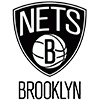
Height/Weight: 6-foot-7, 191 pounds
From: Michigan
Age: 21
Though the Brooklyn Nets surrendered the third overall pick to the Boston Celtics as part of the ill-fated 2013 trade that doomed the franchise, the Nets were able to deal their way back into the first round of the 2016 NBA Draft after sending Thaddeus Young to the Indiana Pacers earlier Thursday. In exchange, the Nets picked up the Pacers' No. 20 overall selection, and used it on LeVert, a supreme athlete who can play three positions, but one who has a troubling injury history.
If it were guaranteed he could stay healthy, LeVert would surely rank near the top of several draft boards. At 6-foot-7, LeVert presents matchup issues for smaller point guards and shooting guards, and can also fit in comfortably at small forward due to his defensive prowess. Along with his lockdown abilities on that end of the court, LeVert has shown a diverse offensive repertoire, displaying a dependable three-point stroke, toughness as a paint scorer and the ability to create off the dribble. In 15 games for Michigan as a senior, LeVert averaged 16.5 points, 5.3 rebounds and 4.9 assists per game, demonstrating an impressively well-rounded skill set.
Unfortunately for the 21-year-old, the 15 games might be the most notable number in that collection of statistics. He missed most of Michigan's conference and postseason schedule after requiring surgery to repair a fractured left foot. It's already the third surgery LeVert has needed to address the foot, which was also ended his junior season prematurely. He's reportedly coming along well in his recovery from his most recent setback, but LeVert is still unable to participate in basketball activities, and that may remain the case up until training camp.
In the event LeVert is able to put the foot problems behind him, even if only temporarily, few rookies selected after the top half of the first round will have as strong of an opportunity to occupy as prominent of a role as he will. The Nets are widely expected to be one of the league's worst teams, and with Jarrett Jack returning from a torn ACL, LeVert may have a chance to run the offense right away if the team opts to ease Jack into the mix. LeVert's aforementioned positional versatility will create other pathways to playing time at shooting guard and small forward, as the Nets aren't exactly flush with excellent options on the wing.








